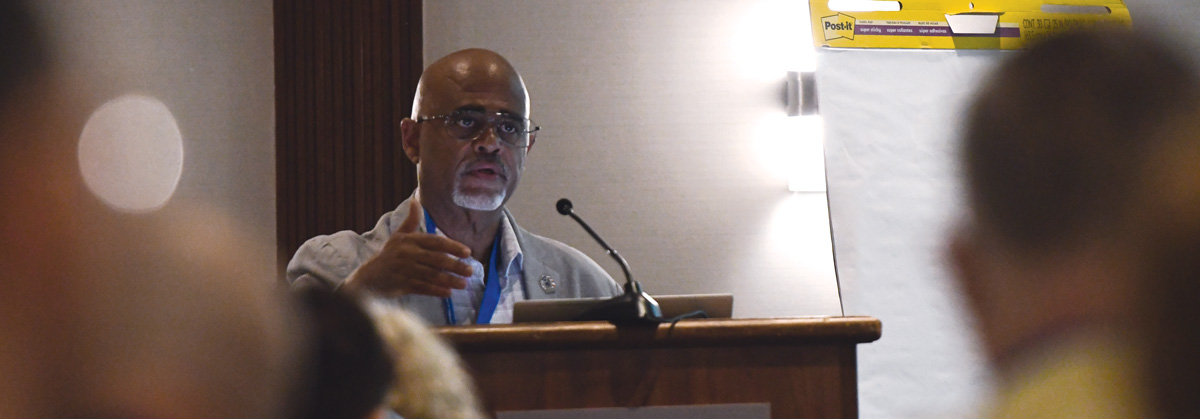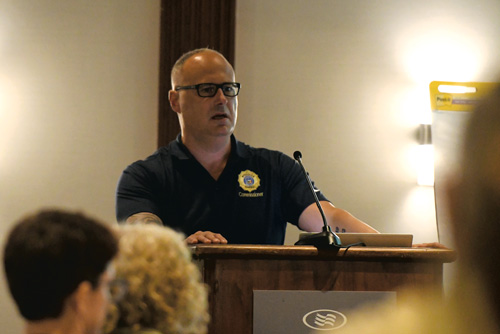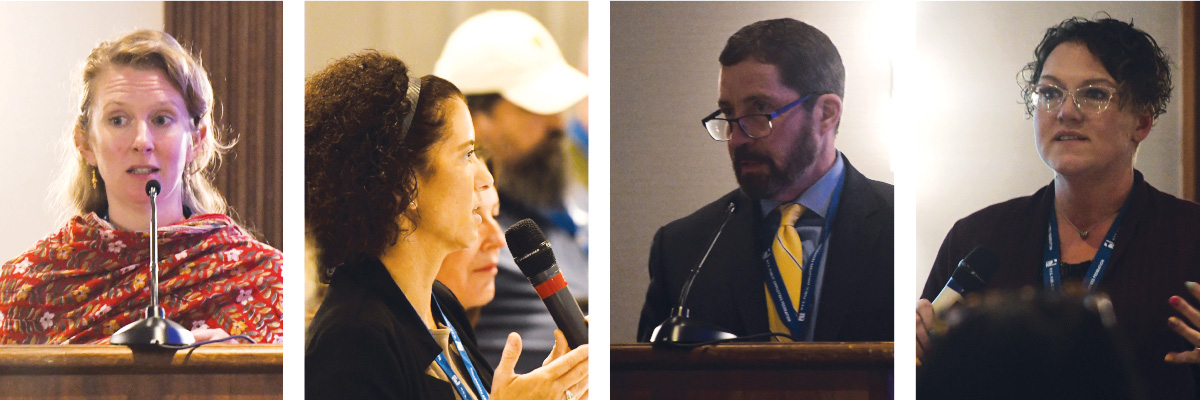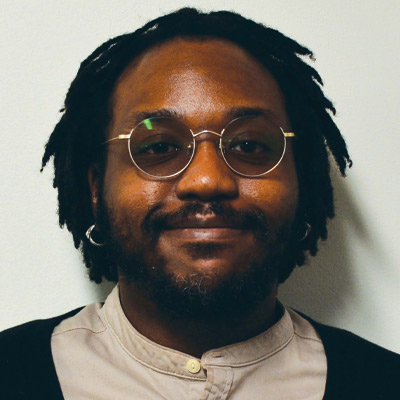
July 18, 2025 — PEF members who work at DOCCS facilities have faced unsafe working conditions for many years, long before the 22-day wildcat strike by corrections officers in March. However, the strike shone a spotlight on the work being done by the civilian workforce and the safety concerns of both incarcerated individuals and the people who work inside the facilities.
In lieu of the annual Labor-Management Conference PEF and the State typically hold in May, PEF decided this year to invite council leaders who work in correctional facilities – either as DOCCS employees or for the Office of Mental Health Corrections Based Operations (CBOs) – to Albany for a two day-conference to discuss issues they face on the job.
Nearly 60 PEF members convened on June 20 and 21 at the Desmond Conference Center in the State Capital for a gathering the union called “Behind the Walls.”
PEF President Wayne Spence kicked things off by recognizing how the strike highlighted issues at DOCCS and gave PEF and other unions a chance to talk about the unintended consequences of the HALT Act, which limits the amount of time incarcerated individuals can spend in solitary confinement.
“We were invited by DOCCS to form a committee following the wildcat strike to try and figure out how to navigate these consequences,” said Spence. “We could not do this alone, we had to be joined by CSEA members, and NYSCOPBA, and everyone who is considered a stakeholder.”
President Spence served, along with four PEF leaders, on the committee, which will soon make recommendations to the State about how to modify HALT so that the behavior of incarcerated individuals can be corrected while staff in facilities stay safe.
President Spence also said that State legislators attempted to pass legislation that would allow New York to discipline DOCCS employees without going through the process established by collective bargaining agreements negotiated with unions. As justification, they cite the alarming deaths of incarcerated individuals, and paint everyone who works ‘behind the walls’ with a broad brush.
“We must get the legislature and the public to see things differently,” said President Spence. “We have been working with One Voice United, a national organization dedicated to elevating the voices and experiences of corrections officers and other front-line professionals in national conversations about corrections and criminal justice.”

DOCCS Commissioner Daniel F. Martuscello III then gave an update on what his agency has done since the strike.
“I’ve visited 40 prisons since March 1. What I’ve seen and witnessed is all of you folks coming together and helping us,” said Martuscello. “You are the reason we got through those 22 days. I cannot speak highly enough of the work you’ve done behind the walls.”
The commissioner said that he has been working on making sure DOCCS is transparent about the work that they’re doing to improve workplaces on social media. He also provided a progress update on the Memorandum of Agreement (MOA) governing safey guidelines in facilities that was put in place following the strike.
Since the MOA was adopted, the commissioner used his authority to suspend programming for 90 days. Some facilities are beginning to open select programs. He continues to evaluate if facilities can begin to re-open classrooms and other forms of programming for incarcerated individuals safely.
“We do have a handful of facilities who have resumed complete, full programming,” said Martuscello. “The majority of facilities are doing program packets in cells and trying to get some recreation that are still connected to cells.”
The commissioner also touched on the HALT Committee’s work and said that he believes that PEF did a great job in making sure members’ voices were brought to the table.
Lastly, the commissioner focused on recruitment and budgeting for DOCCS. After the dust settled following the strike, DOCCS began settling grievances with some of the NYSCOPBA members who took part the strike. While some of those members cannot be brought back into state service by law, Martuscello said that almost 500 corrections officers were brought back as a result of the negotiations.
In addition, Martuscello said that with 6,800 vacancies, 5,000 of which are corrections officers, DOCCS is heavily focused on recruitment.
The New York State budget allocated $4.48 billion for the agency, which the commissioner said will help fund fixed camera projects, personal alarms, body cameras and other updates to facilities and programs.
Following the remarks, PEF members broke into smaller groups to discuss how they can best advocate for safety in the workplace and create action plans.
Members cited staffing issues, a lack of training, poor communication with supervisors, exposure to harmful substances, lack of access to proper Personal Protective Equipment and not having the ability to do robust programming as significant on-the-job hardships.
PEF Health and Safety Director Geraldine Stella said that PEF members know best what the issues are in their facilities. Through the workshops, PEF members learned how to best articulate those concerns and work with other members and supervisors.
“When it comes to talking about these issues, you know it best, and you know how to reframe these issues to talk with your members,” said Stella. “And when you need us to, and when we know these things are happening, we can help.”
All members with health and safety concerns are encouraged to speak to their steward, as well as notify PEF at healthandsafety@pef.org or by calling (518) 785-1900, ext. 254.


